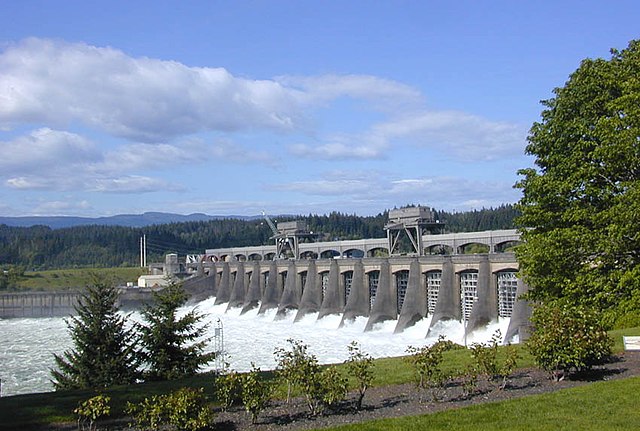The Machine Age is an era that includes the early-to-mid 20th century, sometimes also including the late 19th century. An approximate dating would be about 1880 to 1945. Considered to be at its peak in the time between the first and second world wars, the Machine Age overlaps with the late part of the Second Industrial Revolution and continues beyond it until 1945 at the end of World War II. The 1940s saw the beginning of the Atomic Age, where modern physics saw new applications such as the atomic bomb, the first computers, and the transistor. The Digital Revolution ended the intellectual model of the machine age founded in the mechanical and heralding a new more complex model of high technology. The digital era has been called the Second Machine Age, with its increased focus on machines that do mental tasks.
Metalworking machinery
A freight locomotive
Bonneville Dam (1933–1937)
The Yamato and other battleships in World War II were the heaviest artillery-carrying ships ever launched. They proved inferior to aircraft carriers and missile-carrying warships.
Art Deco, short for the French Arts décoratifs, is a style of visual arts, architecture, and product design, that first appeared in Paris in the 1910s, and flourished in the United States and Europe during the 1920s to early 1930s. Through styling and design of the exterior and interior of anything from large structures to small objects, including how people look, Art Deco has influenced bridges, buildings, ships, ocean liners, trains, cars, trucks, buses, furniture, and everyday objects including radios and vacuum cleaners.
Image: Chrysler Building 1 (4684845155)
Image: Chicago world's fair, a century of progress, expo poster, 1933, 2
Image: Victoire 2 by Rene Lalique Toyota Automobile Museum
Table and chairs by Maurice Dufrêne and carpet by Paul Follot at the 1912 Salon des artistes décorateurs








